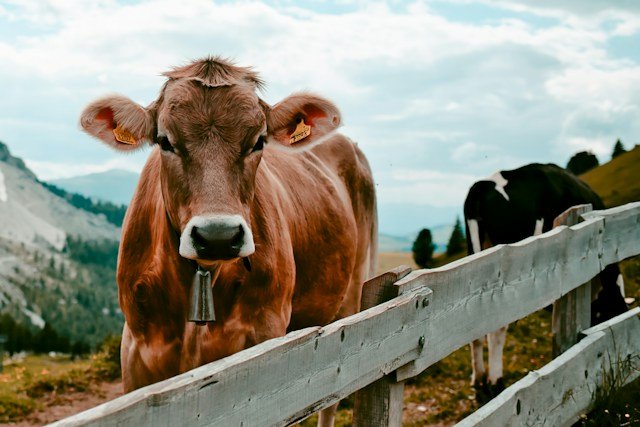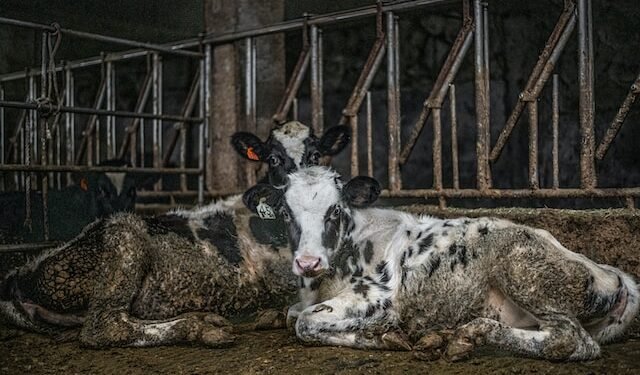Is A Cow A Primary Consumer
In the complex web of ecosystems, knowing the roles and interplays of diverse organisms is vital for ensuring ecological equilibrium. Primarily consumed consumers, usually herbivores, play a crucial part in this delicate ballet of the natural.
In the category of primary consumers, some of the most visible and significant is the simple cow. We delve into the intricate details of the cow’s role as the primary consumer of food in the chain. Apart from providing food for humans, they are a significant contributor to the environment as well as the overall well-being of ecosystems.
By examining their diet, their ecological impacts, and the symbiotic connection with humans, we seek to illuminate the many facets of cows’ role in the intricate web that is life on Earth. Join us to understand what is important about these herbivore animals and their crucial role in the grand orchestra of the natural world.
The Concept Of Primary Consumers

In the complex structure of the complex food chain, primary consumers play a crucial role in the food chain as they are the bridge to producers (plants) and consumers at a higher level. Primarily, consumers are living organisms that primarily feed on autotrophic organisms, mostly plants, in order to meet their energy requirements. This fundamental ecological function places them at the forefront of energy transfer within ecosystems.
1. Definition and Characteristics
- Definition of Primary Consumers: The primary consumers of organisms are those that consume plant matter or autotrophic animals for their main source of energy.
- Particularities: The principal consumers of most herbivores are adept at getting nutrients from plant material via specially designed digestive systems.
2. Position in the Food Chain
- Ecological Pyramid: Primary consumers are the second level of trophic in ecological pyramids. They succeed primary producers (plants) before secondary consumers.
- Energy Transfer: They help in the transfer of the solar energy absorbed by plants to more affluent levels of food chains.
3. Significance in Maintaining Ecological Balance
- Monitoring Population: The quantity and the behavior of primary consumers may affect the dynamics of population growth for both consumers and producers.
- Ecosystem Stability: Through the control of plant populations, primary consumers contribute to maintaining ecological stability and also prevent overgrazing and overgrowth.
Is A Cow A Primary Consumer
Yes, cows are the primary consumers. Primary consumers are creatures who eat plants. They are the primary producers of an ecosystem. Cows are herbivores. This means that they only consume plants. They have specially designed digestion systems and teeth that permit them to disintegrate plant matter and take the nutrients it contains.
Cows play a crucial role in a variety of ecosystems because they aid in controlling the population of plants and recycle nutrients. They also serve as a source of human food by providing us with meat, milk, and even leather.
Cows In The Food Chain
The role of cows in the food chain is
1. Categorizing Cows as Primary Consumers
- Herbivorous role: Cows, being herbivores, are classified as the primary consumers in the food chain.
- Consumption of plants: Their diet is mostly composed of plants, which positions them as vital intermediates in transferring energy from the producers (plants) to higher levels of trophic level.
2. The link between primary consumers and Producers
- Transmission of Energy: Cows play a crucial function in the flow of energy in ecosystems by eating plant material and turning biomass.
- Nutrient cycling: Because of their feeding practices, cattle influence how nutrients are distributed within the soil, which affects the growth of plants and overall health of the ecosystem.
3. Impact of Cows on the Environment and Biodiversity
- Patterns of Grazing: Cows grazing habits can affect the landscape, altering the structure and amount of vegetation that can be found in the area.
- Biodiversity Support: The controlled grazing practice can help to increase the diversity of our ecosystem by establishing diverse habitats and also preventing the dominance of certain plant species.
Ecological Importance Of Cows

This is the ecological significance of cows.
1. Contribution to Nutrient Cycling
- Manure as a Fertilizer: Cows create organic waste which is in the form of manure, which is rich in nutrients such as nitrogen and Phosphorus. Manure can be used as natural fertilizer, increasing the fertility of soils and encouraging the growth of plants.
- Microbiological Activity: The decomposition of cow dung by microorganisms is a contributor to the cycle of nutrients, which facilitates the return of vital elements back to the soil.
2. Role in Seed Dispersal
- The process of grazing and seed distribution: When cows graze, they aid in dispersing seeds. Consumed seeds from plants can be transported across large distances, affecting the plant species’ geographical distribution.
- Biodiversity Support: The dispersal of seeds by cows encourages the development of diversity of plant populations, helping to increase the diversity of the ecosystem.
3. Grazing Patterns and Effects on Vegetation
- Maintaining the Vegetation Structure: A controlled grazing program for cows can help maintain a balanced vegetation structure. This helps prevent the overgrowth of certain species of plants while enhancing the health and biodiversity of ecosystems.
- Habitat Creation: The act of grazing can create large open spaces, encouraging the development of specific species of plants and also providing habitats to various organisms.
Conclusion
In the end, the function of cows as herbivores’ primary consumers goes far beyond their traditional role as food sources for human beings. Due to their place within the food chain they contribute significantly to the complex equilibrium of the ecosystems.
Being the primary consumers, their diet habits impact their distribution of calories, affecting not just the well-being of the plant communities, but also the environment they reside in. Furthermore, the ecological value of cows is emphasized by their part in the cycle of nutrients by their production of organic fertilizers helping seed dispersal, as well as maintaining well-balanced vegetation structures via controlled grazing.
The symbiotic relationship that exists between cattle and the natural world highlights the necessity of sustainable and responsible practices, recognizing both the economic benefits that result from their domestication as well as the need for conservation. Recognizing and respecting the diverse importance of cows in ecosystems is crucial to creating a harmonious relationship between humans and nature.


















